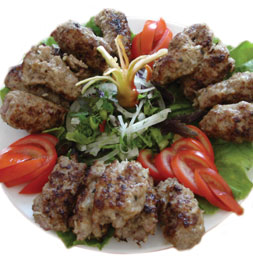 Pages 124-127
Pages 124-127by Ilkin Akbarzade
Our ancestors used to thread their prey onto skewers and grill it over a fire. This culinary technique has survived and improved over thousands of years.
The arguments and disputes over the origin of kebabs have gradually fallen silent. Initially, everyone seemed to agree that kebabs were invented by Turks. The word ´kebab´ is of Arabic origin and means ´fried meat´. It was first mentioned with this meaning in a 14th-century dictionary. But kebab with its modern meaning was used by the Turks several centuries later. There is also a theory that Turkish solders used to chop meat, thread it onto their swords and grill it over the fire. The kebabs that we know now are just one of the varieties of kebab: shish kebab, shish shumpur and Turkish stick kebab.
Kebabs come in dozens of varieties. They are made from whole sides of meat or pieces of meat or from mince. The difference between the kebabs lies in the marinades and sauces. Marinades are necessary not only to soften the texture of the meat, but also to make it spicier.
Alas, not everyone knows how to cook kebab correctly (or how to marinate it). Let´s consider some important points on open chargrilling and grilling. First of all, the fuel is of great importance: the best fuel for a barbecue is dry grapevines or the wood of fruit trees. If you do not have either, then use charcoal.
Secondly, you should know the right way to kindle a fire. Firelighters contain chemical substances that are incompatible with cooking. Therefore, it is recommended to use paper to kindle the fire. You need to wait a while until the red-hot corners are covered with ash and they you can start cooking.
If you are going to use an actual grill, don´t forget to oil it first.
The music of Aroma, the poetry of flavour - this is exactly what was said by travellers in years gone by about the delicate dishes of Azerbaijani cuisine. The writer Alexandre Dumas even recommended that Azerbaijani kebab be included on the menu of French restaurants. Over the centuries, Azerbaijani cuisine has invented many new dishes.
But, the main thing is neither dishes nor drinks. What is most important is the GUEST, so welcome to Azerbaijan!
We asked chef Ilkin Akbarzada to share with us the recipes for national dishes, as well as dishes of his own. He revealed his secrets to us with the greatest of pleasure:
Chicken kebab Arabian style
500 g chicken filletOne lemon
Three cloves of garlic
100 g mayonnaise
100 g chilli pepper
10 g soy sauce
50 g tomato sauce
30 g mustard
20 g brandy
Method:
Chop the breast of chicken into large chunks. Mix a marinade of lemon, chopped chilli pepper, mayonnaise, mustard, tomato sauce, brandy, soy sauce and garlic and pour over the chicken. Leave to marinate. String the chicken onto skewers and grill over charcoal. Garnish with dried fruit.
Method:
Mince the lamb with the onions. Season with salt and pepper and mix thoroughly. Cool the force-meat in the fridge for 45 minutes. String the force-meat on a skewer wider than those used for shashlik and mould into a sausage shape. Grill over charcoal. Wrap the lula kebab in lavash (unleavened bread similar to tortillas) and serve with fresh tomatoes grilled over charcoal.
Lamb kebab
500 g lamb100 g onions
One lemon
20 g dried rosemary
Salt and pepper
Method:
Take a piece of brisket or hind leg meat. Cut the meat into 50-65 g pieces. Add salt and pepper, dried rosemary and lemon juice. String on a skewer and grill over charcoal. Serve with sumac spice or sour plum sauce.
Nush Olsun! Bon appetit!
If you would like to learn more about Azerbaijani food, call Ilkin on (050) 403-07-01 or email:ilkin930@rambler.ru
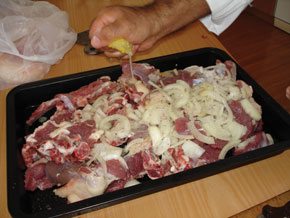
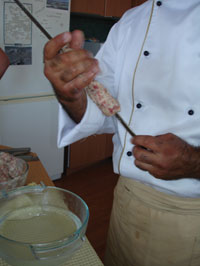
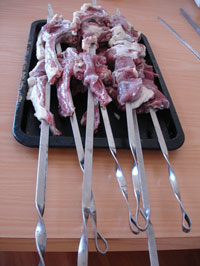
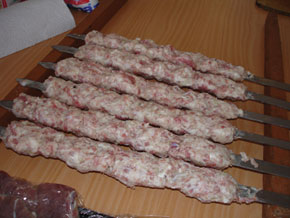
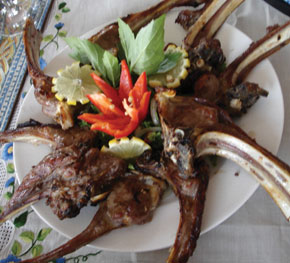


.jpg)